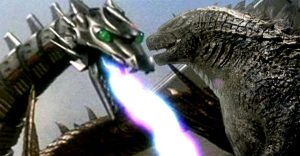Salem’s Lot: Biggest Differences Between Series & Stephen King’s Book

Stephen King’s novel, Salem’s Lot has been adapted into two separate miniseries over the years, both versions taking their own stab at the source material. As with many adaptations of the author’s work, themes and characters are altered for the screen, oftentimes condensing the books in order to abide film and television time constraints.
King’s novel centers around writer Ben Mears returning to the town of Jerusalem’s Lot, Maine, where he spent some of his childhood. Planning to write a book about a notoriously abandoned house in the town, Ben quickly learns it has been purchased by the mysterious Kurt Barlow, who at first remains unseen while his business partner, Richard Straker, does his bidding. It is soon revealed that Barlow is a vampire and Straker is his human familiar. Ben must attempt to save the town and himself from the forces of the ancient, powerful Barlow as he begins to turn those around him.
The first miniseries, directed by horror legend Tobe Hooper, aired on CBS in 1979 and was critically well received despite its notable changes from the novel. Praised for its take on both the vampire and haunted house narrative, Hooper’s miniseries pleased fans by including various homages to the horror genre. The series also inspired a follow up film released in 1987 titled A Return to Salem’s Lot, though the sequel was not as applauded as its predecessor. In 2004 a second miniseries aired on TNT, starring Rob Lowe as Ben Mears. The setting was switched from the 70’s to the early 2000’s and the series offered a modern take on the novel’s narrative.
Biggest Differences Between Salem’s Lot Book & Series

King’s novel approaches the vampire genre by paying homage to Bram Stoker’s Dracula through his character of Kurt Barlow. Barlow, inspired by Dracula’s suave, sophisticated manner, presents as human and proposes the notion of an ancient vampire existing in modern day. The small, sleepy town of Jerusalem’s Lot serves as an eerie backdrop for a contemporary vampire takeover and while all screen adaptations stuck to it’s source’s setting, there are a number of notable changes from King’s book. In the 1979 miniseries, Kurt Barlow’s appearance is perhaps the most glaring difference. While Barlow appears human in the novel, the series chose to portray him as a Nosferatu-like creature who possesses supernatural powers such as telekinesis. Barlow’s human familiar, Straker is the more prominent villain in series whereas in the book Straker exists more as an extension of Barlow himself, doing his business and bidding.
The original miniseries also made changes when it came to the character of Father Callahan. While he served an important role in the novel, his presence bringing up discussions of religion and good versus evil, the series severely reduced the character of Father Callahan. King has pointed out that this causes the series to lack certain themes important to the novel, particularly omitting the strong messages of faith. The 2004 miniseries, however, abides the book and puts emphasis on the character of Father Callahan, played in this adaptation by James Cromwell.
While the 2004 adaptation follows the book when it comes to details such as Father Callahan and Kurt Barlow’s appearance, opting for the novel’s Dracula-esque description, the series is not without its alterations. Set in the early 2000’s as opposed to the 1970’s, characters and plot points were modernized, and voice-over was used to maintain the flow of the story. Another noticeable difference throughout all the adaptations comes through the character of Susan, Ben Mears’ love interest. While Ben must go through the painful moment of killing Susan, who has been turned by Barlow and now poses a threat, the novel and both series place this scene at a different moment, each securing their own version of Stephen King’s Salem’s Lot.
About The Author

















